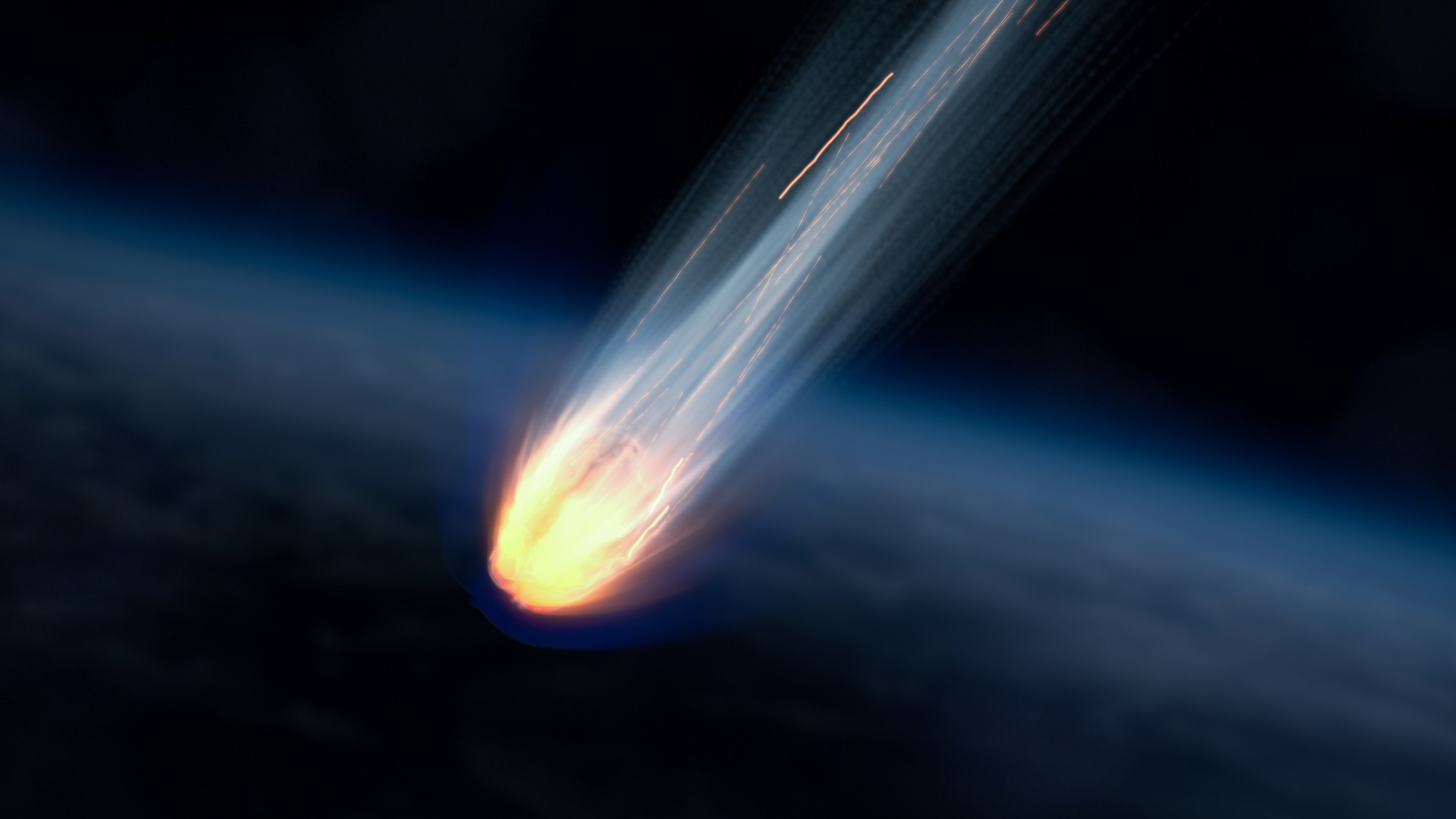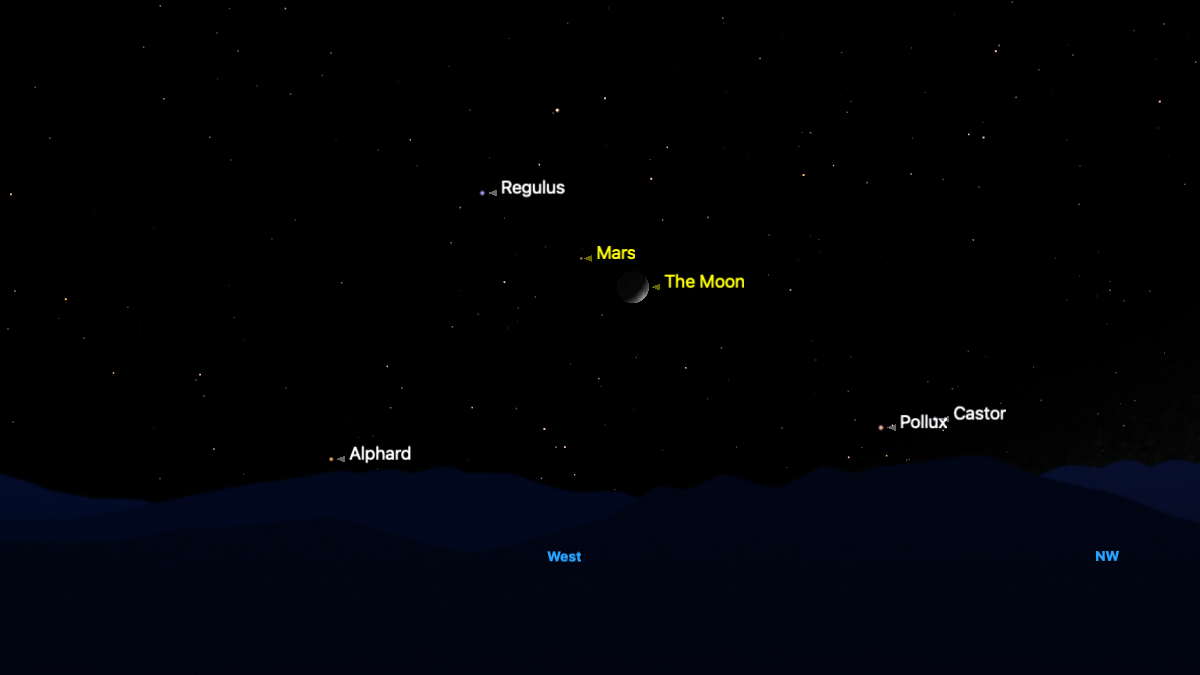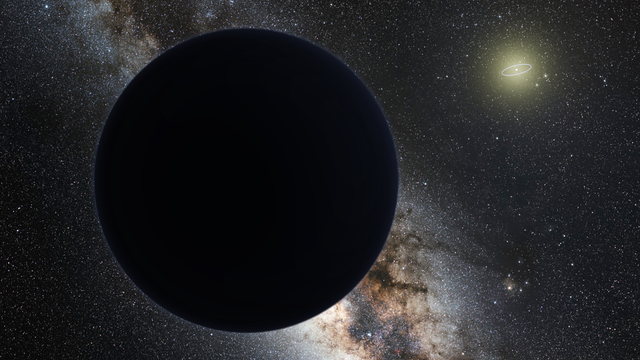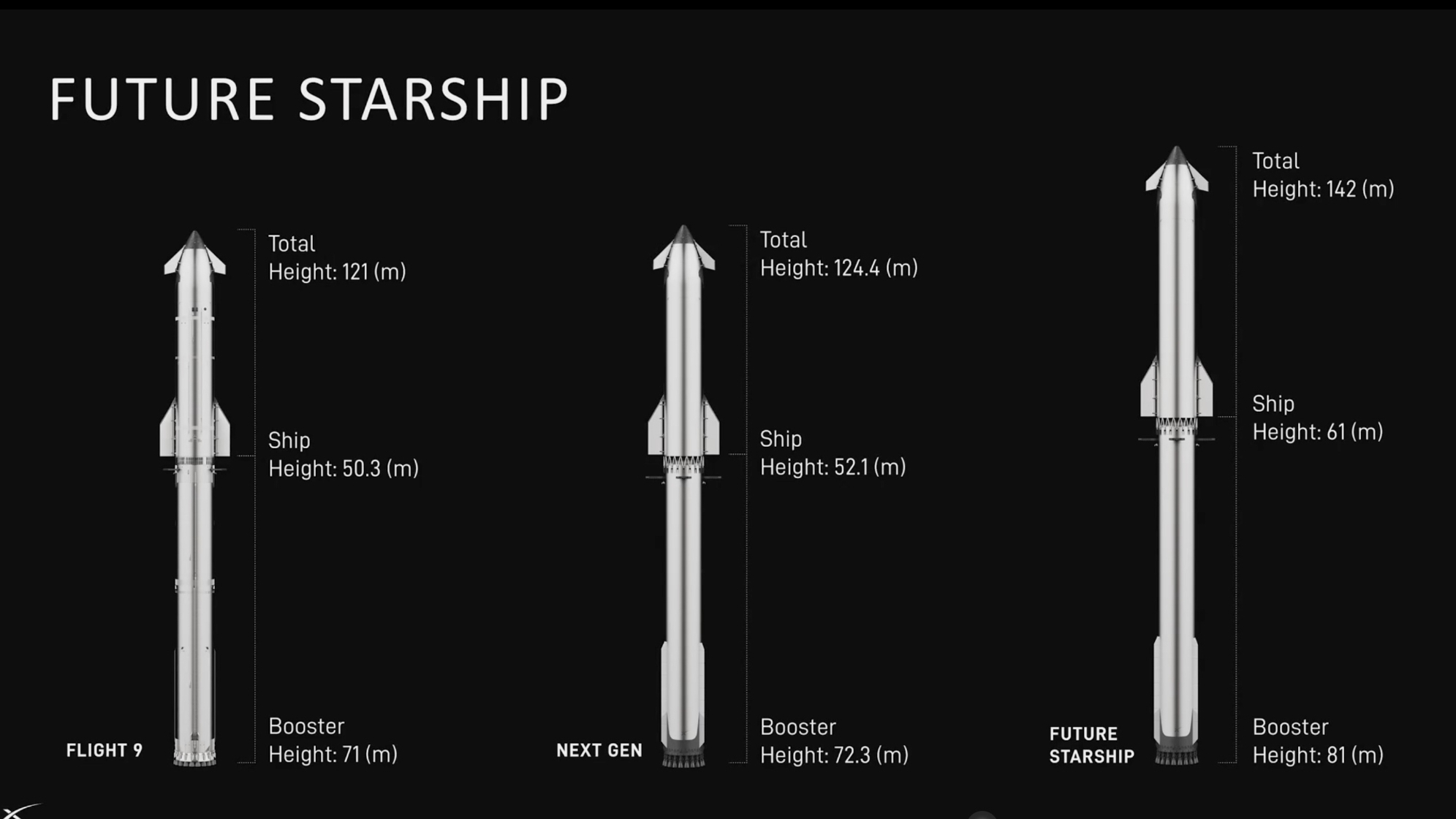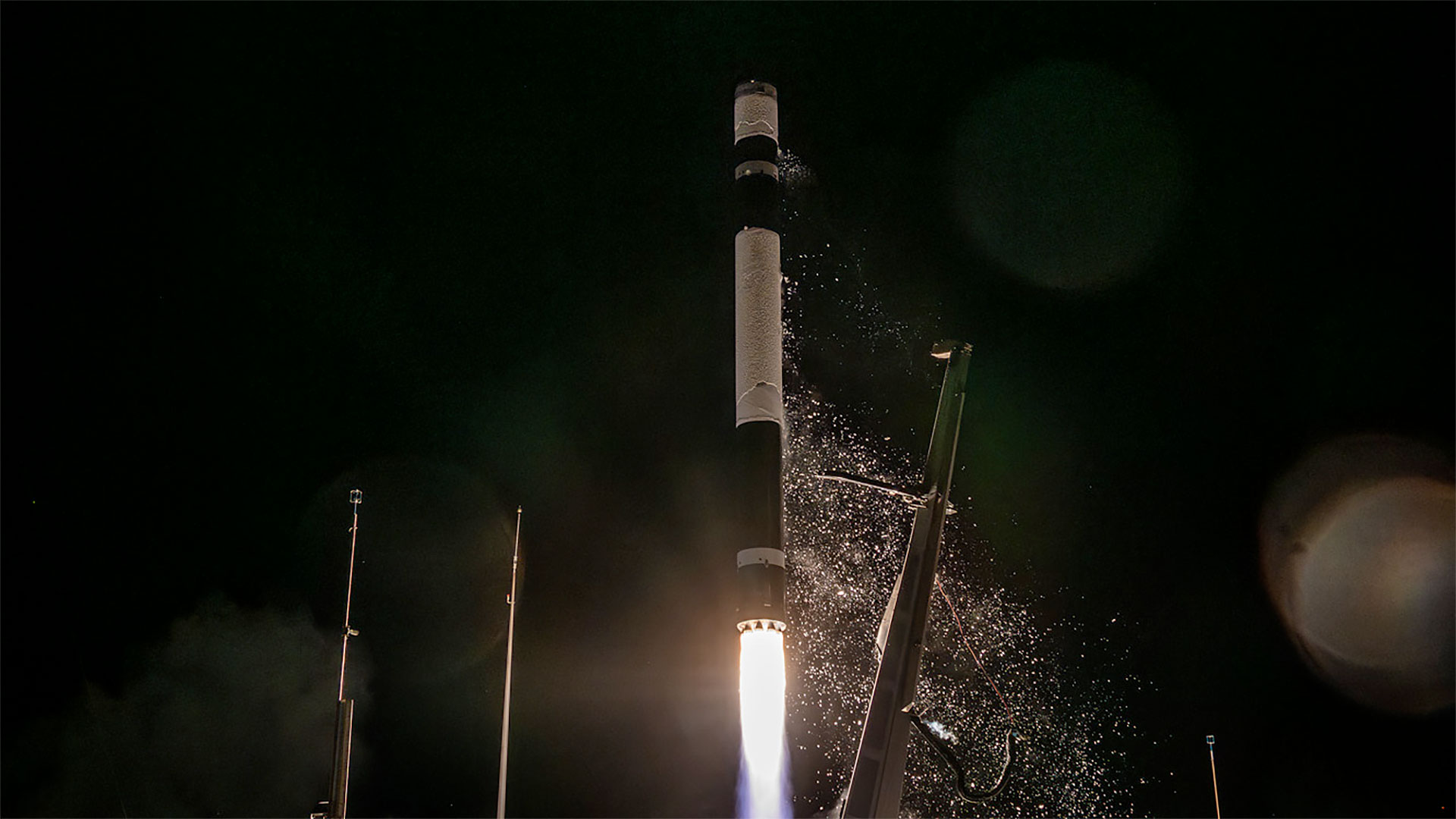Venus reaches its point of greatest western elongation on June 1, at which time the dazzling ‘morning star’ will be at its most distant point from the sun in Earth‘s sky during its pre-dawn apparition. The rocky planet will hit the orbital milestone at 00.00 a.m. EDT (0400 GMT) on June 1, while Venus is below the horizon for skywatchers in the U.S, according to stargazing website EarthSky.org. At this time, Venus will be separated from the sun by a gulf of 46 degrees along the line of the ecliptic,…
Read MoreCategory: Solar System
Our solar system
Watch a brilliant ‘fireball’ meteor explode over China on May 28 (video)
Residents of Maoming, China were treated to a celestial light show earlier this week when a surprise fireball burst to life overhead, illuminating the city before disappearing in an intense flare of light. The fireball burned up over the southern Chinese province of Guangdong at 9:33 p.m. local time on May 28, according to multiple dashcam videos that have circulated online in the wake of the event. The videos show the meteor make a dramatic 5-second journey through the night sky, during which it changed color from a pale green-blue…
Read MoreThis Week In Space podcast: Episode 163 — The Trials of Starship
The Trials of Starship – Starship Flight Test 9 – YouTube Watch On On Episode 163 of This Week In Space, Rod Pyle and Tariq Malik discuss Starship’s recent test flight with Space.com reporter Mike Wall. What went right, what went wrong, and what are the prospects for Elon’s mammoth rocket meeting NASA’s goals for a moon landing in 2027? Also, Musk’s recent video outlining future plans for Starship and a Martian metropolis, Chinese company Sepoch’s recent (and very Starship-like) vertical launch and landing test, Japan’s robotic lander, Resilience, about…
Read MoreDon’t miss the crescent moon shining close to Mars on May 31
The moon will shine near Mars in the post-sunset sky on May 31, before jumping to its left the following night. (Image credit: Starry Night.) The moon will appear to skip over Mars between the nights of May 31 and June 1, appearing to grow ever larger ahead of its first quarter phase next week. Stargazers in the U.S. can find the moon roughly 35 degrees above the western horizon an hour after sunset on May 31, with the stars of the constellations Leo (left) and Cancer (right) shining on…
Read MoreScientists found a possible new dwarf planet — it could spell bad news for Planet 9 fans
A potential new dwarf planet has been discovered in the outer reaches of the solar system, and its existence poses the greatest challenge yet to the hypothesis that a ninth planet lurks far from the sun. “We were very excited to discover 2017 OF201 because it was not expected at all,” study leader Sihao Cheng of the Institute for Advanced Study in Princeton, told Space.com. “It’s very rare to discover an object both large and with an exotic orbit.” “The object’s aphelion — the farthest point on the orbit from…
Read MoreElon Musk says SpaceX will launch its biggest Starship yet this year, but Mars in 2026 is ’50/50′
SpaceX is still shooting for Mars next year with its giant Starship rocket, despite some recent explosive hiccups with the megarocket. That was one of the takeaways from a new update that Elon Musk just gave about SpaceX‘s plans to help humanity settle the Red Planet — an ambitious goal that has driven the billionaire for decades. “Progress is measured by the timeline to establishing a self-sustaining civilization on Mars,” Musk said in the 42-minute presentation, which SpaceX posted on X on Thursday (May 29), referring to the ongoing work…
Read MoreCanon RF 35mm f/1.4L VCM lens review
Key specs Type: Prime lens Focal length: 35mm Maximum aperture: f/1.4 Lens mount: Canon RF Weight: 19.58 oz / 555 g Dimensions: 3.01×3.90 in / 76.5×99.3 mm Filter thread: 67mm Release date: June 2024 Popular prime lenses for astrophotography often come in at 24mm or wider to allow for capturing a much wider view of the sky with little ground interest, which makes sense. But when you’re incorporating ground elements to act as significant foreground interest, slightly longer focal lengths can be advantageous. This is where 35mm lenses come into…
Read MoreScientists capture never-before-seen plasma streams and bizarre ‘raindrops’ in sharpest-ever view of sun’s outer atmosphere (video)
The sun’s outer atmosphere — the corona — has long intrigued scientists due to its extreme temperatures, violent eruptions and towering prominences — vast filaments of plasma extending out from the solar surface. Visible only during a total solar eclipse and blurred by Earth’s turbulent atmosphere, the corona has remained frustratingly elusive. Until now. Thanks to a breakthrough adaptive optics system called Cona, installed at the 1.6-meter Goode Solar Telescope (GST), operated by NJIT’s Center for Solar-Terrestrial Research (CSTR) at Big Bear Solar Observatory (BBSO) in California, scientists now have…
Read MoreCould time travel tourism be the next space tourism? (op-ed)
Can we journey through time? From H.G. Wells’ “The Time Machine to The Time Traveler’s Wife” by Audrey Niffenegger and “Outlander” by Diana Gabaldon, time travel has captured our imagination for centuries. The concept is ever-present in all forms of sci-fi entertainment, from time-travel movies like Back to the Future and Looper, to time-looping games like The Outer Wilds, and of course, sci-fi novels. It speaks to our deepest regrets and desires — the chance to reconnect with someone now gone, to undo mistakes, or to relive our most precious…
Read MoreWatch Rocket Lab launch private Earth-observing satellite to orbit tonight
Rocket Lab plans to launch an Earth-observing satellite for the company BlackSky tonight (May 28), and you can watch the action live. An Electron rocket is scheduled to lift off from Rocket Lab‘s New Zealand site today at 9:15 p.m. EDT (0115 GMT and 1:15 p.m. New Zealand time on May 29), carrying a “Gen-3” satellite for Virginia-based BlackSky toward low Earth orbit (LEO). Rocket Lab will stream the launch live, beginning 30 minutes before liftoff. You can watch live via the company and here at Space.com if, as expected,…
Read More
